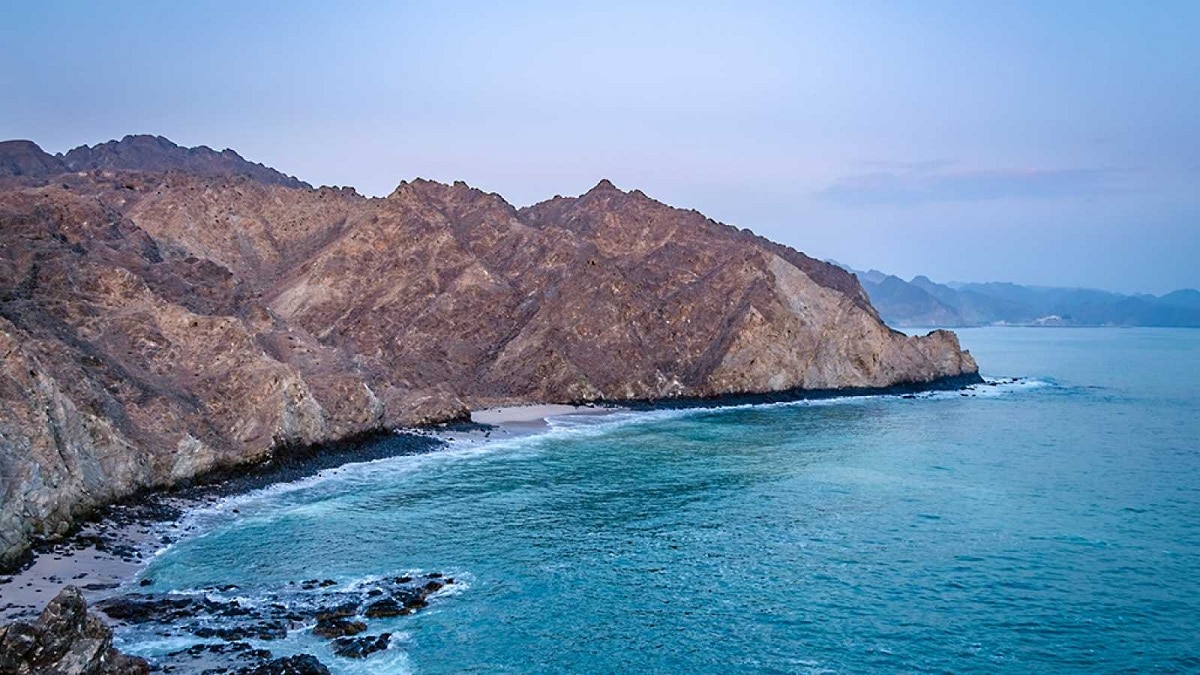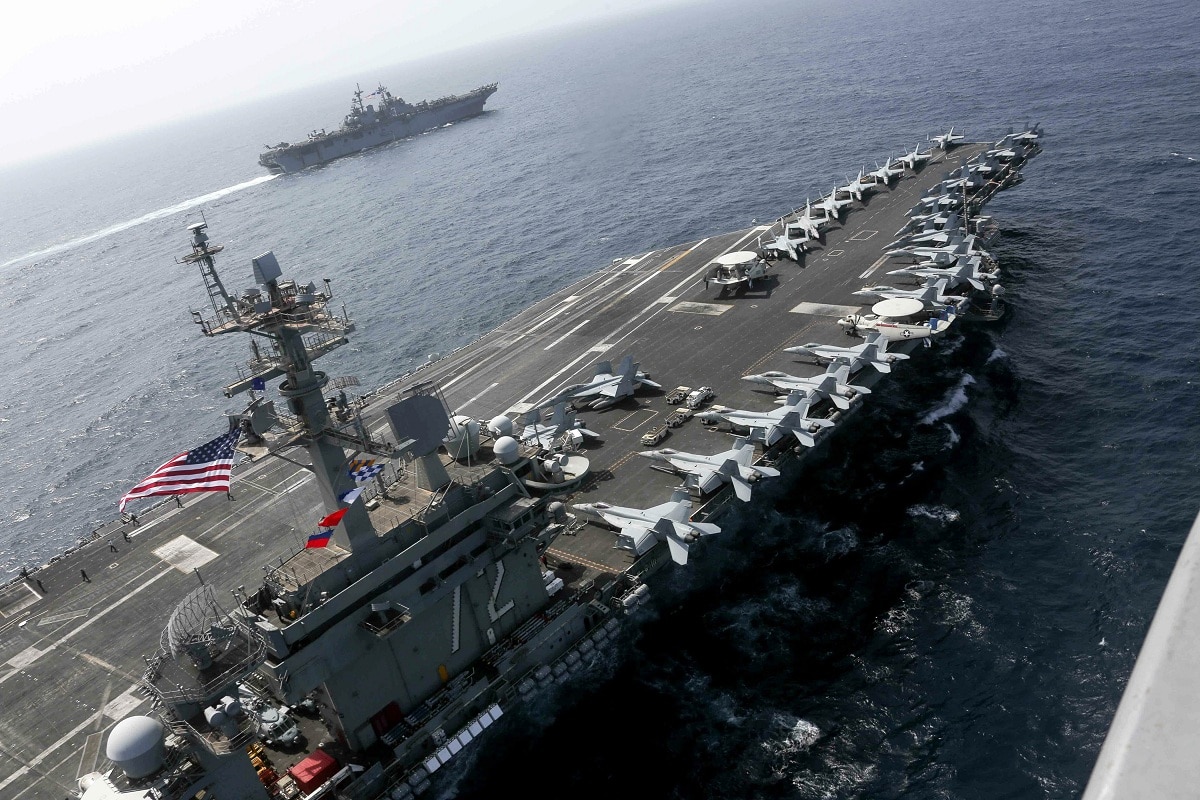
Among the seas that are located throughout the Indian Ocean we have the arabian sea. It is also known as the Sea of Oman or the Arabian Sea. It is a large body of salt water that is of great economic importance since it is a trade route that links Europe and the Indian subcontinent. Before being called the Arabian Sea it was known by other names such as the Persian Sea, the Eritrean Sea and the Indian Sea.
In this article we are going to tell you all the characteristics, formation, biodiversity and threats of the Arabian Sea.
Key features

It is located in the northwest of the Indian Ocean. It is bounded to the west by the Horn of Africa and the Arabian Peninsula with Yemen and Oman on its edges, to the east by the Indian subcontinent, to the north by Pakistan and Iran, and to the south by part of the Indian Ocean. One of the curiosities that this sea has is that there are no islands in the middle. However, there are areas where the average depth exceeds 3.000 meters.
The Indus River is the most relevant that flows in its entire area. It is one of the most important rivers to give water to this sea. Its area includes the Gulf of Aden, the Gulf of Khambhat, the Gulf of Kutch, and the Gulf of Oman, which is connected to the Persian Gulf through the Strait of Hormuz. Of all these smaller bodies, the Gulf of Aden and the Gulf of Oman are its most important branches.
It is not a sea that is small in size, but it is not one of the largest in the world. The total area of the Arabian Sea it is approximately 3.8 million square kilometers. In some areas there are great depths that help the development of biodiversity and minimize environmental impacts. The deepest area of the entire sea is 4652 meters. The most extensive area registers up to about 2.400 kilometers, being the widest seas.
Thanks to these characteristics it has become one of the important routes of Europe with the Indian subcontinent.
Arabian Sea Climate
We are going to describe the prevailing climate in this place. We can describe a type of climate ranging from tropical to subtropical. Its waters are relatively warm having a center that registers average temperatures of 25 degrees. We know that the characteristics of this sea are strongly influenced by the existence of monsoons. Monsoons are times of heavy rains that often leave economic disasters. The most normal thing is that more or less between the months of April and October, the winds begin to blow in a southwesterly direction, while the rest of the year they tend to blow in the opposite direction.
It is during all these specific months that environmental changes occur. It all starts with a cooling of the sea surface. The same goes for changes in ocean currents. And it is that the ocean currents during these months of the year are reversed. A zone of minimal oxygen is produced that It is characteristic for having a considerable decrease in oxygen in a region of the sea. These conditions generate the formation of upwellings. The upwellings are waters moved by the wind that carry a large amount of nutrients that affect the areas of Oman, Yemen and Somalia. Thanks to the entrainment of nutrients and these characteristics, the northern region of the sea is rich in flora and fauna. It is especially rich during the monsoon season.
Formation of the Arabian Sea
Let's see what are the points that made this sea form. The formation of the Arabian Sea was related to that of the Indian Ocean. Before this ocean, there was the Tethys ocean. This ocean was responsible for separating the part of Gondwana, to the south, and Laurasia, to the north, during most of the Mesozoic era. It is when it is thought that during the Jurassic and late Cretaceous periods This is when Gondwana began to fragment and form what is known today as Africa and India.
Further afield, in the late Cretaceous Madagascar and India were definitively separated. Thanks to this, the Indian Ocean was able to increase its space and the Arabian Sea began to take shape to the north. All of this happened approximately 100 million years ago. At that time, India was moving at a speed of about 15 fifteen centimeters per year in the direction of Europe.
Biodiversity

This sea has not only become a route between Europe and the Indian subcontinent, but it also has a great amount of biodiversity. It has a quite changeable climate due the temperature differences that exist between landmass and water. This change in temperatures and the continuous contrast is what makes the monsoons generate. There are different types of marine habitats within this sea such as coral reefs, seagrass meadows, coastal mangroves and sandbanks, among others. All of these ecosystems have become home to a large number of species of fish and marine invertebrates.
The flora is represented by red, brown and green algae. Unlike the fauna, the flora is not that rich. The fauna is a much more impressive spectacle. It survives thanks to a food chain that begins with plankton that it develops thanks to the upwellings we have mentioned above. These upwellings are generated during the monsoon season and help to keep the waters nourished the rest of the year.
Among the most notable fauna species we have the lantern fish, green turtle, Hawksbill turtle, barracuda, damsel fish, fin whale, sperm whale, orca, lobsters, crabs and other dolphins.
Threats

Finally, we are going to see the threats that this sea has as it is a vital commercial maritime route between Europe and Asia. Given that a large number of ships pass through these places, it is quite evident that there are problems of ecological risks derived from these human activities. Oil spills have damaged health and killed multiple animals including seabirds. The damage in this sea increases every time since more ships are those that transit these waters.
On the other hand, fishing exerts great pressure on marine biodiversity. It is not always carried out in a sustainable way and the methods of capture can involve accidental fishing or damage the environment.
I hope that with this information you can learn more about the Arabian Sea and its characteristics.